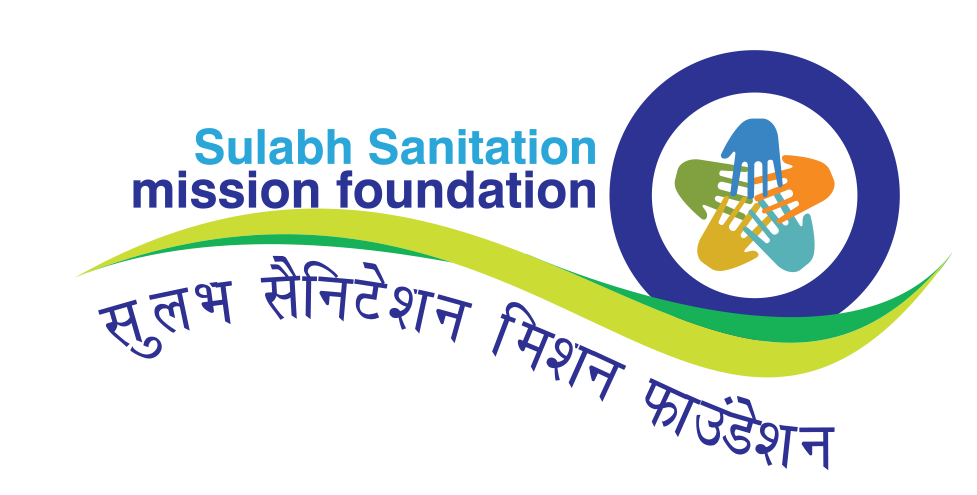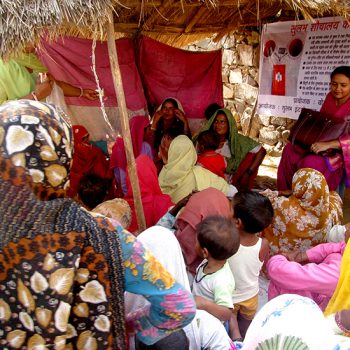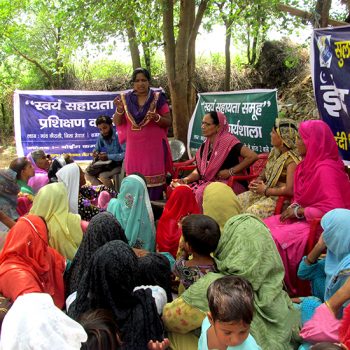The lack of access to sanitation and water disproportionately impact women and girls in every community. Our interventions, therefore, have looked beyond sanitation and focused on the overall development of the most marginalised in the community. Overall development can only be achieved when you empower the most marginalized in the community. Hence, a big focus of our programs is to build the resilience of women through peer network and introducing measures aimed at achieving women’s economic empowerment.
Capacity building of women
through SHG
Methodology
Through various training programs, workshops and skill development courses, we empowered thousands of women. We establish SHGs in rural areas and link them with markets. Constant inputs of training and capacity building are provided from time to time, to sustain the activities of the groups.
Our training and capacity building process involves two steps:
Outcome
We have been able to create women leaders in the community. They have become agents of change. Since they are actively involved the economic activities, they are also more aware of health and hygiene. Women trained by us have proved to be the first line of defence during the COVID-19 pandemic as they have shown incredible resilience economically and healthwise.
Capacity Building of Students, Teachers and Parents through School Sanitation clubs
School sanitation clubs act as a tool for spreading awareness about sanitation and environment. Students of schools are grouped in different sanitation clubs depending upon their age and interest.
The key areas of focus are:
- Safe handwashing practices as a means to achieve better health and nutrition among children
- Efficient distribution of government mid-day meal to achieve equity
- Promotion of personal hygiene
Methodology
Each group has a leader that reports to the president of the club. Children are provided hands-on training every week. At the end of the program, competitions are organized like essay writing, quiz and poster making etc.
Outcome
We have observed that children who are exposed to such training tend to have good health and are less prone to disease. Children also educate their parents and elders in the community about the benefits of a clean environment and hygiene. Since teachers’ command respect of the community.
Expanding the capacities and outreach of ANM & Asha workers
We work closely with ASHA workers. ASHA worker and ANM workers are generally more aware of the demography of the targeted areas and they have the ability to reach out to almost every individual in a community or village.
The involvement of ASHA workers for generating awareness among community members work effectively. All ASHA workers are involved in the village health and sanitation committees of the panchayat either as members or as special invitees (depending on the practice adopted by the State).
ASHA workers also coordinate with gram panchayats in developing the village health plan. They also coordinate with the anganwadi workers to complete the village health register. Working with ASHA and Anganwadi workers enable us to expand and enhance their capabilities
Training on Sanitation
After the completion of construction of individual household toilets, we train beneficiaries on how to use, clean and maintain the toilets. We run door to door campaign and organize community baithkas (meetings) to disseminate our ideas and views efficiently. General masses are more receptive to the visuals. So, we arrange poster pamphlets and audio-visuals in our campaigns. We organize informal meetings and invite men, women and grown-up children for baithaks (meetings) to discuss issues on health, hygiene, water, sanitation facilities or any other health issues.
Know your schemes programmes
We organise Pre-Learning Assessment (PLAs) to learn about the demography and interact with the villagers. We motivate them to learn about various government schemes and entitlements and how to access them.
Self Help Group (SHG) is a small group of people ranging from 10 to 20, who come together with the intention of solving their common socio-economic problem through regular savings and having access to credit, which in turn leads to the generation of livelihood and assurance of certain degree of self-sufficiency among the members (Panda, 2009).
The SHG method is used by the government, NGOs and Banks worldwide. Thousands of the poor and the marginalised population in India are building their lives, their families and their society through Self-help groups. The 9th five-year plan of the government of India had given due recognition on the importance and the relevance of the Self-help group method to implement developmental schemes at the grassroots level. Microfinance, training and capacity building are an important component of SHGs. Constant inputs of training and capacity building are required to sustain SHG.


































